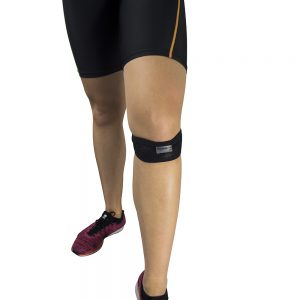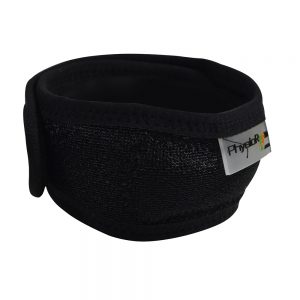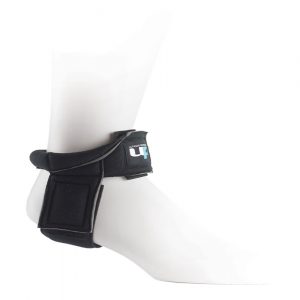The beauty of running is in the simplicity. You just move your legs, you don’t really need much else, at least to begin with. But as you progress, running injuries may start to become a problem and you may want to protect yourself from harm.
Running is one of the most popular forms of sporting activity worldwide, and that can be seen on no bigger scale than the London Marathon this weekend. But despite it’s many health benefits there is some concern over the incidence of injury, especially in terms of heel pain, shin pain and knee pain in runners and joggers.
It will come as no surprise that the most common running injuries affect the lower limbs and include blisters, Plantar Fasciitis, runner’s knee (IlioTibial Band Friction Syndrome) and shin splints.
If you’re a keen runner then there’s every chance that you’ve had a frustrating lay off due to one of these common running injuries. It often helps to know as much as you can about these ailments, to ensure that you’re doing everything you can to help yourself.
Similarly, if you’re keen to avoid these common running injuries it’s a good idea to be familiar with the signs and symptoms.
That’s why we here at PhysioRoom.com are here to provide an easy to follow guide to the most common running injuries, with some recommendations of the products that can be of help.
That’s because training and competing in events like triathlon, cycling and the track and field events, of course, does not come without risk and significant chance of overuse injuries if your schedule isn’t properly managed, so we thought we’d share some common injuries the athletes at the Commonwealth Games are almost certain to have dealt with at some point.
Let’s get to it…
Running Injuries
Blisters
What are they?
Everyone’s had a blister at some point. Up to 40% of marathon runners suffer from blisters. The heels, toes and balls of the feet are the most commonly affected areas. They are caused by prolonged friction that produces a shearing force in between the layers of skin. As the layers of skin separate they fill with blood or fluid. This results in a painful blister.
Prevention
Make sure you have properly fitting running shoes and break these in gradually. Never wear new running shoes for a race or a long run.
Moisture wicking bluster socks that have two layers are excellent at preventing blisters. The inner layer stays with the foot whilst the outer layer moves with the shoe, thus eliminating friction on the skin and reducing wear. The unique mixture of fibres helps to keep the foot dry and blister free.
Treatment
The qualified medical staff at running events can clean the blister thoroughly before lancing it with a sterile implement. This can relieve the pressure and pain. Once a blister has been lanced it is imperative to keep the area meticulously clean in order to prevent infection. As ever, prevention is better than cure.
For some blister preventing socks, check out the below product…



- The 1000 Mile Ultimate Trainer Liner Socks are high quality blister prevention trainer liners for performance enhancement, designed to sit below the shoe line. Unique double-layer construction gives outstanding comfort with no blisters and no wear-out within 1000 miles of use.
- The ultimate technical racing trainer liner. The tactel layer stays with the foot, wicking away moisture, whilst the outer layer moves with the shoe. The lack of friction between the layers helps prevent blisters and reduces wear. The combination of fibres and top venting maintain a comfortable temperature for the foot.
- The inner layer is 100% Tactel to wick moisture away from the foot. The outer layer is 76% cotton, 22% Nylon and 2% Elastane Lycra, for the absorption of perspiration with a comfortable fit.
Runner’s Knee
What is it?
IlioTibial Band Friction Syndrome is so prevalent in runners that it is commonly known as ‘Runner’s knee’. It affects up to 10% of all runners at some stage.
Typically there is pain located on the outerside of the knee joint. This pain may radiate up the thigh or down the outerside of the shin and is exacerbated by running. Usually, the knee pain from Runner’s Knee is only present during activity and settles when the person rests. However, in some cases it can also be extremely uncomfortable going up or down stairs.
Prevention
Runner’s Knee is an overuse condition that is aggravated by excessive training. Make sure that you gradually increase your training load, there should be no sudden increases in workload as this can overload the tissues. Tightness in the IlioTibial Band has been implicated so stretching the Gluteus Medius and Tensor Fascia Latae muscles may be helpful as a preventative measure.
Similarly increased pronation of the foot (uncontrolled lowering of the arch) can lead to increased tension in the IlioTibial Band when running. Motion controlling running shoes that prevent excessive pronation can be effective in reducing this cause of increased IlioTibial Band tension. Alternatively an insole that supports the arch of the foot can help to control excessive pronation.
Treatment
Because Runner’s Knee is inflammatory in nature, then ice packs and Non Steroidal Anti Inflammatory medication (NSAIDs) prescribed by your doctor are effective in the early stages.
Physiotherapy treatment is very effective in alleviating Runner’s Knee. Once the inflammatory soreness has been resolved a physiotherapist will assess posture and lower limb alignment in order to give specific stretching and strengthening exercises to treat the underlying cause of the problem.
If you’re looking to keep runner’s knee at bay, check out the below product…



- The PhysioRoom.com Elite Jumpers Knee Patella Strap is a high quality adjustable knee strap that has been designed to help provide relief from the symptoms of patella tendonitis (jumpers knee) and osgood schlatters disease. The patella strap provides adjustable and comfortable compression, while the hook and loop closures adjust for an easy, custom fit.
- The patella strap is also ideal for using during the recovery process following a knee injury and helps to reduce inflammation of the knee joint caused by incorrect patella alignment.
- Featuring Coolmax fabric lining the patella strap keeps you cool and ensures of total comfort, while the gel pad provides patella compression. The patella strap is comfortable to wear and is easily adjustable with the Velcro strap, which applies pressure to the patella tendon. Reducing the width of the patella tendon with the pressure that is applied by the patella strap prevents maximum force being transmitted through the tendon.
‘Shin Splints’
What is it?
Shin Splints is a common term for pain in the shin region. It can be a misleading term and most sports medicine professionals try to avoid using it. This is because shin pain and ‘Shin Splints’ can be due to several different conditions. One of the most common shin conditions that gets labelled ‘Shin Splints’ is Medial Tibial Stress Syndrome.
Medial Tibial Stress Syndrome is fairly common in runners. People suffering from Medial Tibial Stress Syndrome will feel shin pain on the inner side of the shin during exercise and also at rest. It is important to consult a sports doctor who can distinguish Medial Tibial Stress Syndrome from other causes of shin pain (‘Shin Splints’) such as Compartment Syndrome and stress fracture.
Prevention
The amount of stress being placed on the shins can be minimised by wearing good quality, supportive running shoes with shock absorbing insoles. It is possible that some cases of Medial Tibial Stress Syndrome could be prevented by correcting problems such as flat feet (excessive pronation) with arch supports.
Treatment
Most patients respond well to treatment with a chartered physiotherapist. This involves rest, strengthening and stretching exercises, followed by a gradual return to running after symptoms subside. In order to help prevent recurrence of the condition, a bio-mechanical analysis (an analysis of posture at rest and during walking and running) is very useful.
For a shin support, check out the below product:

- The Ultimate Performance Advanced Shin/Calf Support is made from a 2mm (deep) soft blend neoprene, the Ultimate Performance Advanced Calf/Shin Support offers a staged progressive level of support beyond that of the Ultimate Neoprene Shin/Calf Support and Ultimate Compression Elastic Calf Support models already in the range.
- For calf muscle strains, shin splints and minor Achilles strains. It mimics the support and action planes of key ligaments and tendons to reinforce them, targeting the areas most in need of this support.
- The compressive element of the material also stimulates blood flow, which can help prevent the build-up of lactic acid both during and following activity, reducing the prospect of cramp and stiffness whilst also being a valuable recovery and rehabilitation tool for injury.
Plantar Fasciitis
What is it?
Plantar fasciitis refers to inflammation of the Plantar fascia (a fibrous sheath that runs most of the length of the sole of the foot), usually at the point where it attaches to the heel bone. It is a common cause of heel pain in runners. Pain is common over the inside of the heel and usually radiates down the inside of the sole of the foot. The pain usually occurs with activity and is also typically present in the morning when taking the first steps of the day.
Prevention
Inadequate footwear is often implicated in Plantar fasciitis. Shoes should provide adequate support for the foot during running. Unsuitable footwear can increase strain of the Plantar fascia and lead to the development of inflammation.
There may be a problem with the biomechanics of the foot, which contributes to the problem. The usual findings are a foot that ‘over pronates’, where the inner arch of the foot rolls over too much during walking and running. This can lead to tightness in the Achilles tendon and recent research has suggested that a tight Achilles tendon can increase strain on the Plantar fascia.
Treatment
Plantar fasciitis settles with conservative treatment in 95% of cases. Conservative treatment, such as physiotherapy, aims to reduce local inflammation and address any biomechanical problems. While the Plantar fascia is still painful it may be treated with ice packs (never apply ice directly to the skin) and anti-inflammatory drugs prescribed by a doctor. Once the pain has subsided, stretching the Plantar fascia (by pulling the toes towards the shin) is effective in encouraging the tissue to regain its normal alignment.
For an insole option to help alleviate your pain, check out the product below…
- The Enertor Comfort 3/4 length insoles are perfect for everyday use in tighter fitting shoes where additional material in the toe box becomes too tight. Each insole sticks to the shoe and can easily be removed and transferred to another pair of shoes.
- General improvement of shock protection in the heel and midfoot. Ideal for those that experience heel pain, forefoot discomfort and/or lower limb fatigue as a result of being on their feet for long periods at any one time.
- Great for alleviating the symptoms of Plantar Fasciitis. Enertor conducted a study that found 91% of those wearing their insoles reported an improvement in their overall level of pain and levels of overall pain reduced by 35% on average after wearing insoles for 4 weeks.
Achilles Tendinopathy
What is it?
Commonly known as Achilles Tendonitis, Achilles Tendinopathy is usually characterised by degeneration of the tendon (the Achilles tendon is situated above the heel and forms the lower part of the calf muscles). The degeneration means that the tendon does not possess its normal tensile strength and may be liable to rupture with continued sporting activity.
Achilles Tendinopathy usually comes on gradually, and is more common in those aged over 40. There is pain, which is worsened by activity, and the focal areas of degeneration feel tender to touch. Often the tendon feels very stiff first thing in the morning. The affected tendon may appear thickened in comparison to the unaffected side.
Prevention
Training errors should be avoided. The intensity, duration and frequency of training sessions should be carefully monitored and gradually progressed. Sudden increases in these variables should be avoided. Muscle strength and flexibility should be maintained through regular strengthening and stretching sessions.
It is thought that an ‘over pronated’ foot position (where the foot rolls inwards) can place excessive strain on the Achilles tendon and lead to Achilles Tendinopathy. In this case it is often useful to consult a chartered physiotherapist, who can carry out a biomechanical assessment (an assessment of posture at rest and during walking and running). If there is excessive pronation it is usually effective to insert an arch supporting insole that can help to correct the problem.
Treatment
The key to recovering from Achilles Tendinopathy is in trying to elicit a healing response without overloading the tendon. This requires rest from sporting activities for up to three months. This is because the collagen tissue, which the body produces to repair the tissue damage, takes three months to lay down and mature.
Published research has suggested that recovery is optimised by using a programme that uses what is called ‘eccentric muscle work’. Eccentric muscle work refers to a muscle that is lengthening while contracting – a contraction that occurs during movements such as landing and decelerating. Maximum tension is generated in the muscle during the eccentric contraction and this causes the tendon to adapt and get stronger.
For a support to wear during your rehab, try the product below…


- The Ultimate Performance Ultimate Achilles Tendon Support uses a combination of compression and added stability, meaning this easy to wear ankle support relieves and heals the symptoms of Achilles tendonitis.
- It can be worn during training or as part of everyday wear to ease stress on the Achilles tendon. A soft tube within the support reduces pressure on the tendon to give relief from pain and discomfort. This support can be worn on the left or right ankle and is designed to encourage an early heel rise to place limited amounts of stress on this area.
- The ultimate Achilles tendon support is perfect for rehab following: Achilles tendon pain, tendonitis, weakness in the ankle, stiffness, ankle pain.




